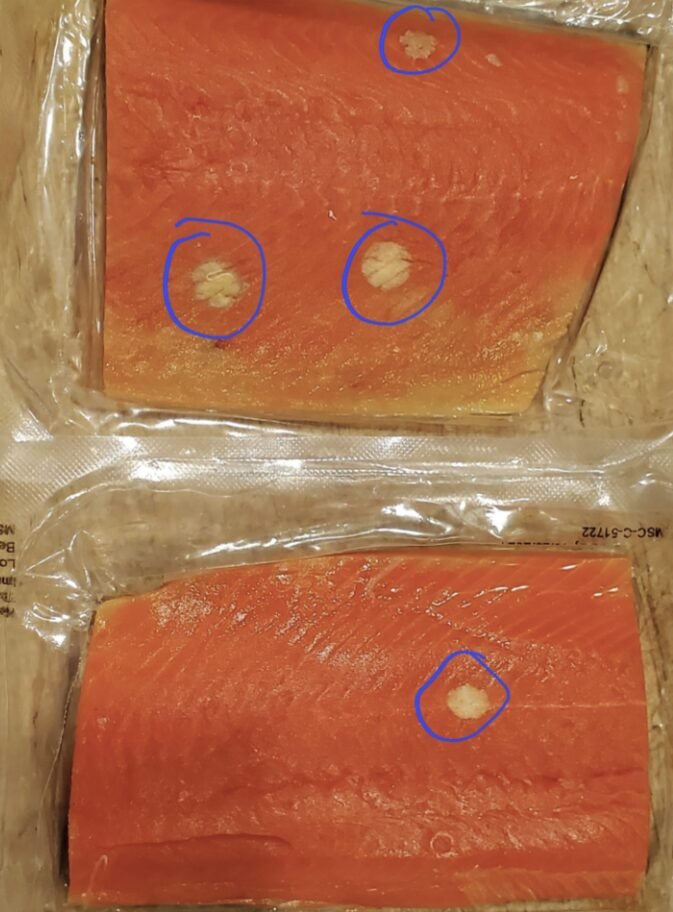A Surprising Discovery
Salmon is a family favorite in our weekly meals—whether grilled with lemon or slow-cooked in teriyaki glaze. Recently, I thawed a beautiful fillet and noticed a strange yellow tint on the flesh. I immediately wondered, “What is this, and is it safe to eat?”
Investigating the Yellow Tint
At first, I panicked. Salmon usually has a pink hue, so the yellow patch raised concerns. I retraced my steps: Was it in the freezer too long? Had it been stored incorrectly? Did something go wrong?
Understanding Fish Fat
After some research, I learned that a yellow tint on defrosted salmon is typically harmless. The yellow color comes from oxidized fat. Salmon is fatty, and if frozen for a long time or improperly stored, its fat can oxidize and change color. This doesn’t make the fish unsafe, but it may affect its appearance and quality. Always check for signs of spoilage, such as a sour smell, slimy texture, or bad taste.

Freezer Burn and Discoloration
Freezer burn can also cause discoloration. If salmon isn’t wrapped properly, it may lose moisture and develop yellow or white spots. While this isn’t ideal, it doesn’t ruin the fish. Just trim off the affected areas, and the rest is usually good to cook.
Natural Variations
Wild salmon species sometimes have a natural yellowish belly due to their diet, which includes crustaceans and algae. Farmed salmon typically have more consistent coloring, but variations can still occur. The yellow tint may just be a natural characteristic of the fish.
How to Prevent Yellow Tint
- Seal Properly: Ensure your salmon is airtight before freezing. Vacuum-sealed packaging works best, but plastic wrap and freezer bags help too.
- Label and Date: Mark when you froze the salmon to track its age. The USDA suggests using frozen fish within 3 to 8 months for optimal quality.
- Rotate Stock: If you buy salmon in bulk, use older fillets first to ensure freshness.
Conclusion
My yellow-tinted salmon turned out perfectly. I cooked it to perfection and served it with garlic asparagus. The family couldn’t tell the difference—it was still juicy and delicious.
Next time you notice a golden hue on your defrosted salmon, don’t worry! Give it a quick smell test, trim any discolored areas, and cook it as usual. Most likely, it’ll be the same tasty, nutrient-packed fish with just a little more character.





